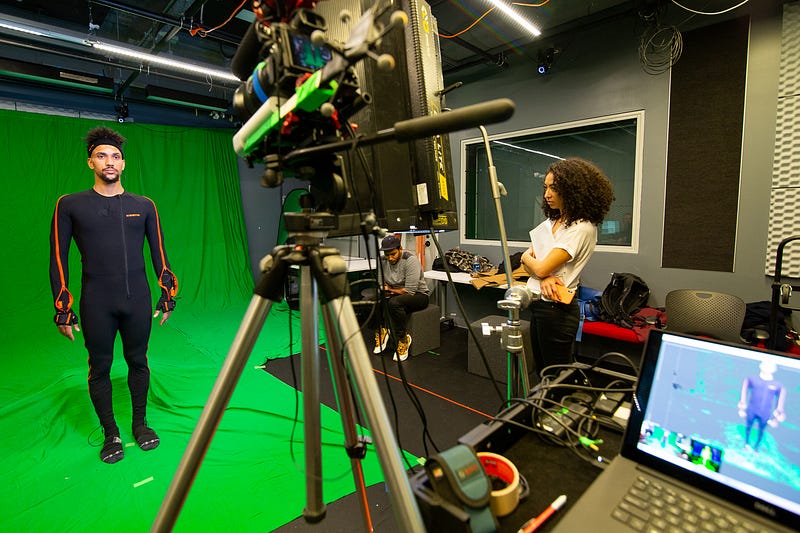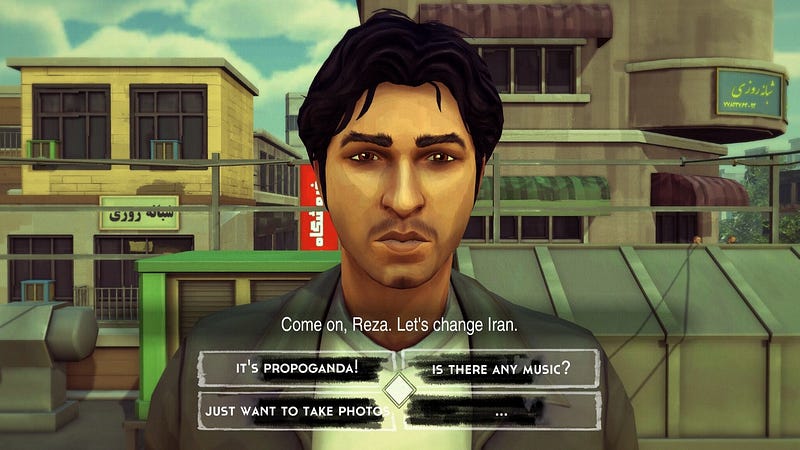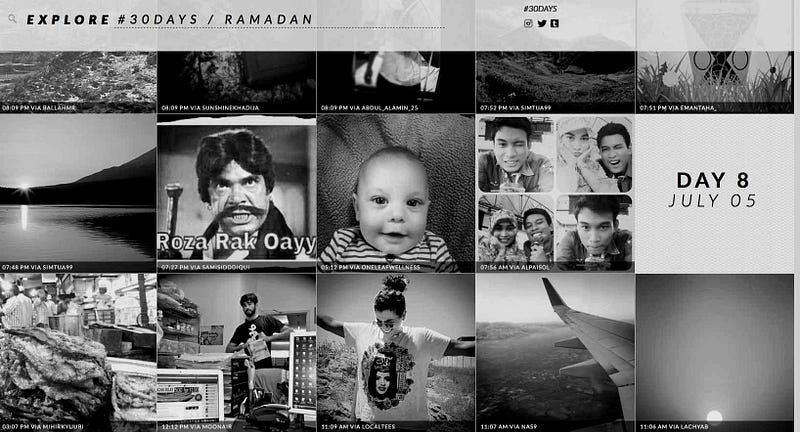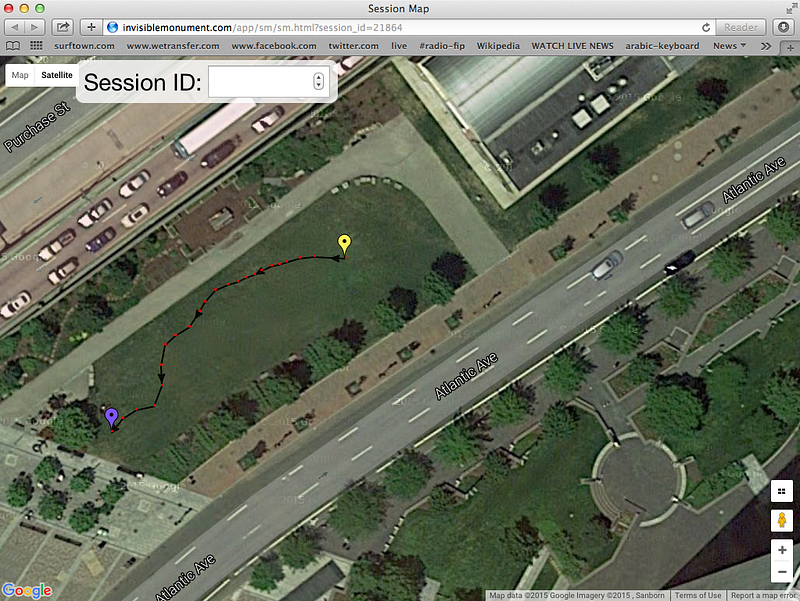Spotlighting 11 artists whose practices span installations, AR, VR, games, interactive projects and more
Written by Abby Sun with research from Katerina Cizek
For the past month, the US documentary filmmaking industry has been roiled by the selection and premiere of Jihad Rehab within the 2022 Sundance US Documentary Competition. The film has been roundly criticized in op-eds written by Muslim and MENA [Middle Eastern and North African] documentary filmmakers, including Just Films Co-Creative Journalism fellow at MIT Open Doc Lab Assia Boundaoui, and in reviews such as Immerse Editor Abby Sun’s Filmmaker Magazine dispatch and Farihah Zaman’s Reverse Shot roundup.
Since the film’s virtual premiere in late January, the film’s disregard for its participants’ safety, its salacious “War on Terror” anti-Muslim framing, and its support from some industry gatekeepers despite years of concerns brought up by a diverse group of filmmakers have rippled outwards. As a result, two senior Sundance Institute staff have resigned and its top executives wrote an apology for hurting “members of our community,” but not for selecting and platforming the film. Additional coverage from Indiewire’s Eric Kohn traces the controversy’s fallout.
In the middle of this industry reckoning, contributors to the Twitter tag #mymuslimfilm have been gathering hundreds of works made by and for Muslim and MENA filmmakers and their communities. As Boundaoui wrote, a diverse group of filmmakers, “including Black Muslim women, queer South Asian men and Arab Christians,” have been using the hashtag to share “an incredible array of stories they’ve directed” or admire. Given the close ties between documentary filmmakers and artists working in immersive and new media, we hope to bring attention to these 11 makers who have been trailblazing and driving our field of extended reality (XR) forward.
What’s exciting about XR is that (for now) the form and rules are less entrenched than for flat documentaries, so it’s a sandbox of experimentation. There is more possibility for writing new languages, reconstituting old ones, and building power from within previously overlooked communities. We’ll be spotlighting each maker via Immerse’s social media channels and encourage your contributions to the hashtag.
— Immerse Editorial Collective
1. Assia Boundaoui
Starting from where her award-winning feature debut The Feeling of Being Watched left off, Boundaoui’s Inverse Surveillance Project “takes its name from the concept of citizen under-sight, an action undertaken by the subjects of surveillance, of the systems of surveillance. It is an art project co-created with the Arab and Muslim American communities in Chicago, which seeks to build power, compel government transparency and co-create new narratives of our American Muslim experience through the creation of a site-specific, AR-fueled, counter-archive.”
2. Zahra Rasool
The head of AJ Contrast, Al Jazeera’s woman-led, Emmy-nominated immersive storytelling studio, Rasool has been a force in immersive journalism for years. AJ Contrast’s latest project is Still Here, “an immersive multimedia project exploring incarceration and gentrification in New York City through the lens of a fictional character named Jasmine Smith who returns to Harlem after 15 years in prison.” Rasool was recognized as a Global Media Gamechanger at the 2018 International Broadcasting Convention. More recently, she was given a Gracie for Best National Online Producer for Still Here by the Alliance of Women in Media Foundation (2021). Since 2017, Rasool and her team have won 24 media and film awards including a NABJ Award, Amnesty Media Award, RTDNA Award and two Online Journalism Awards (OJA).
3. Yasmin Elayat
From 18 Days in Egypt (a participatory crowdsourced documentary about the 2011 Egyptian Revolution) to Zero Days VR (on cyber warfare and the Stuxnet virus) and The Changing Same (a magical-realist and afro-futurist VR film about the history of racial injustice in America), Elayat’s work as an immersive director, co-creator of new media documentaries, and large-scale installations has been awarded for its technological innovation and storytelling power. Elayat is also Co-Founder of Scatter, “recognized for pioneering the emerging language of Volumetric Filmmaking through its original volumetric film productions and its AR/VR creativity tools. Scatter’s first product Depthkit is the most widely used toolkit for accessible volumetric video capture.”

4. Navid Khonsari
Converging documentary storytelling with the interactivity of video games, 1979 Revolution: Black Friday immerses players into the profound chaos of the people — where ideology, loyalty, sacrifice and betrayal are abound in a city under siege — and the decisions you make are crucial. Since its launch in 2015, 1979 has been lauded for its narrative ambiguity and the character performances, including in Immerse. The game is created by Navid Khonsari, a gaming veteran known for his contribution to the Grand Theft Auto series, and his indie studio, iNK Stories (co-founded with Vassiliki Khonsari). iNK Stories has since published Blindfold VR, a first person experience where audiences must weather an interrogation by nodding (in partnership with Center For Human Rights in Iran and Committee to Protect Journalists), and Hero, “a deeply provocative, immersive, multi-sensory large-scale installation that explores human connection during the Syrian Civil war.”
 In 1979 Revolution: Black
Friday, the playable character Reza Shirazi is a young photographer
In 1979 Revolution: Black
Friday, the playable character Reza Shirazi is a young photographer5. Asad J. Malik
Terminal 3 is an interactive, augmented reality documentary in which viewers take on the role of an airport security officer, deploying a branching narrative structure that allows viewers to guide the conversation with the Muslim passenger before them. Inspired by Malik’s own experiences being interrogated, his project makes use of the airport interrogation setting to explore Muslim identities in the US, as well as a tension between scanning, obstruction, and human-to-human interaction. More recently, Malik’s mobile app Jadu “allows for Next-Gen AR gameplay in which NFT avatars become playable characters that can understand their surroundings, interact with the real world and use virtual objects.”
6. Gabo Arora
Arora has been the co-lead artist and director of two landmark VR works. Zikr: A Sufi Revival takes four participants on an interactive, virtual reality journey into a world of ecstatic ritual and music in order to explore the nature of faith alongside followers of this mystical Islamic tradition; Clouds Over Sidra, the first film shot in virtual reality for the UN, is a VR experience designed to take viewers to the Za’atari camp in Jordan. In addition, Arora, a former UN diplomat, is the Founding Director of the Immersive Storytelling and Emerging Technologies program at Johns Hopkins University. His creative tech and production studio LIGHTSHED.IO is based in Brooklyn.
7. & 8. Bassam Tariq & Musa Syeed
These two longtime filmmakers, whose work crosses fiction and nonfiction modes, joined up for the collaborative “30 Days/Ramadan,” a multifaceted portrait of Muslims’ personal experiences of Ramadan across the globe. In 2010, 2011 and 2012, Tariq and the comedian Aman Ali spent the month of Ramadan at a different mosque every night for their project “30 Mosques in 30 Days.” In 2013, Tariq and Syeed encouraged participants to share their personal stories of Ramadan on Twitter, Tumblr, and Instagram, using the hashtag #30days. They then aggregated and curated the posts. Professionally produced short films also helped showcase the diversity of Muslim voices, from a young woman who decides to start a photo blog to a father and son bonding over traditional dhol drumming.

9. Lara Baladi
Vox Populi, Tahrir Square, a project by Lara Baladi, included a series of media initiatives, artworks, publications, an open source timeline and portal into web based archives of the 2011 Egyptian revolution and other global social movements. In an insightful Immerse interview, Baladi reflected on the nature of “augmenting reality” and a more recent project, Invisible Monuments, a geo-located contributory audioscape that uses Roundware, an open-source app that enables people to listen to geolocated audio clips seamlessly and contribute their own.
 Path of a person experiencing
Invisible Monument in Dewey Square. Copyright Halsey Burgund, 2015
Path of a person experiencing
Invisible Monument in Dewey Square. Copyright Halsey Burgund, 201510. Razan AlSalah
AlSalah’s work crosses video and text-based approaches with digital technologies and connectivities. TIMEBOX Beirut, a public art installation made with Lofti AlSalah, is a series of modern plexiglas stereoscopes specially designed to mount on a street pole. “TIMEBOX places each archival 3D image in its original context to provoke a sense of how Beirut’s urban public space has changed in the past century. The act of walking through the trail of 10 boxes around Beirut or simply stumbling upon a TIMEBOX, aims to reawaken our experience of Beirut’s public spaces and highlight the contrast of how it has changed.” Her latest film, your father was born 100 years old, and so was the Nakba (2017), imagines her grandmother is about “to return to Haifa when she was still alive, through Google Streetview, which today is the only way she could see Palestine, the only way Razan can see Palestine.”
11. Samaneh Moafi
As Forensic Architecture’s Senior Researcher, Moafi has worked on 27 investigations at the trail-blazing organization. She provides conceptual oversight across projects and oversees the Centre for Contemporary Nature, which, in her words, “engages with environmental destruction through the lens of conflict. Conflict is a major contributor to anthropogenic changes. Violence against the environment may be slow, indirect, and diffused, but we believe it is enmeshed in colonial and military violence, and forms of domination.” Her research is focused on developing new evidentiary techniques for environmental violence. Out of dozens of investigations, recent ones include Teargas in Plaza de la Dignidad, on show at the the 15th Bienal de Artes Mediales, as well as Beirut Port Explosion and Herbicidal Warfare in Gaza installed at Whitworth Art Gallery in Manchester, UK, and a multi-faceted, landmark investigation into historical and current environmental racism in Louisiana’s Death Alley.
For more news, discourse, and resources on immersive and emerging forms of nonfiction media, sign up for our monthly newsletter.
Immerse is an initiative of the MIT Open DocLab and Dot Connector Studio, and receives funding from Just Films | Ford Foundation, the MacArthur Foundation, and the National Endowment for the Arts. The Gotham Film & Media Institute is our fiscal sponsor. Learn more here. We are committed to exploring and showcasing emerging nonfiction projects that push the boundaries of media and tackle issues of social justice — and rely on friends like you to sustain ourselves and grow. Join us by making a gift today.